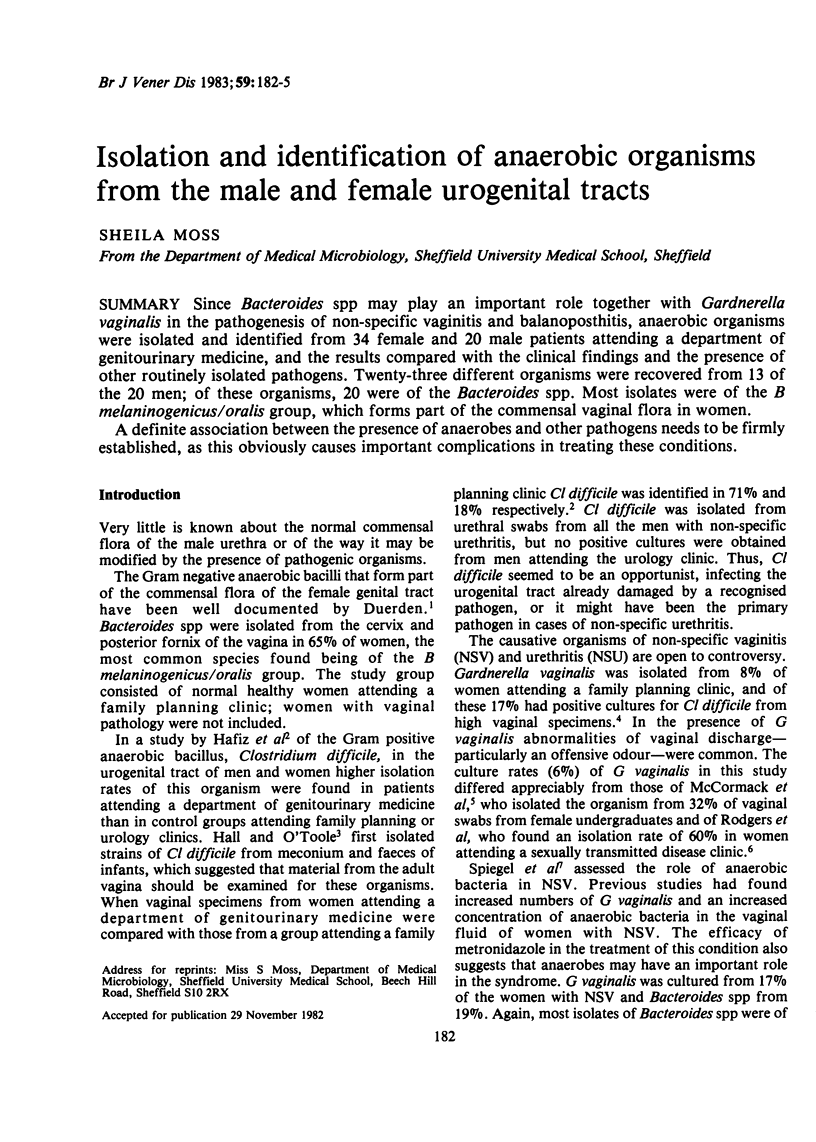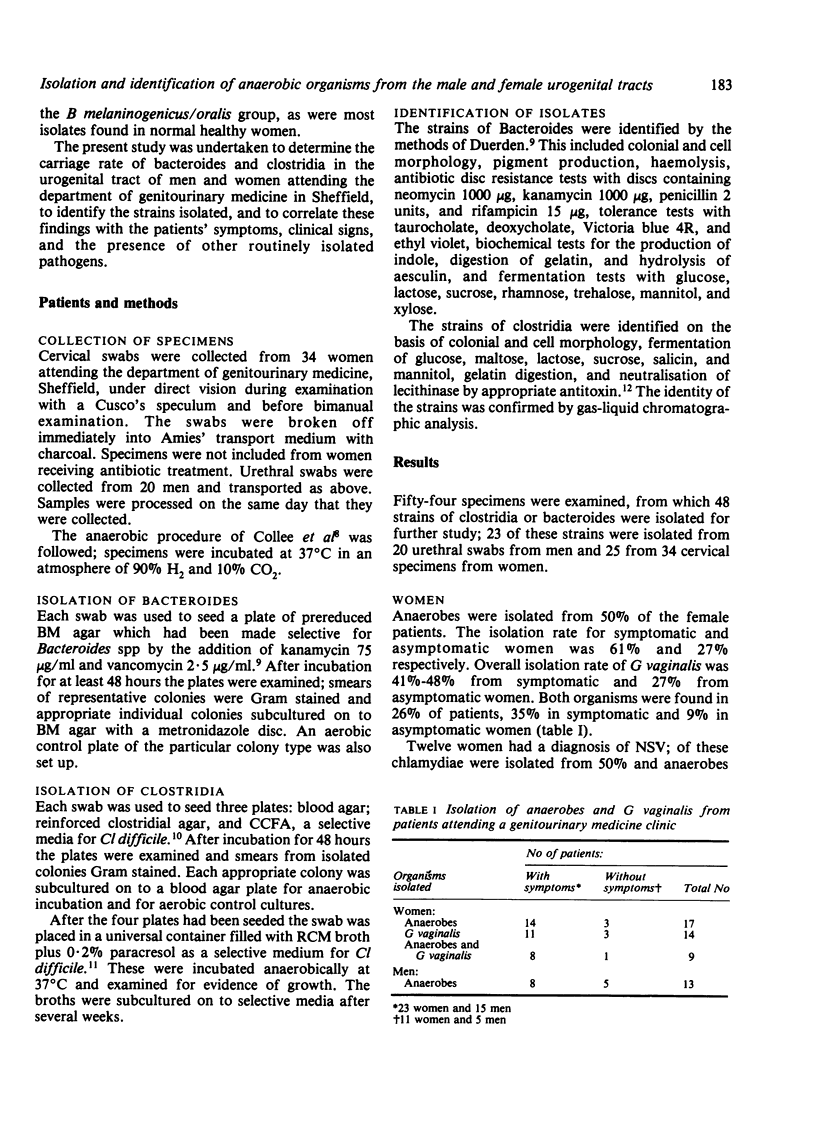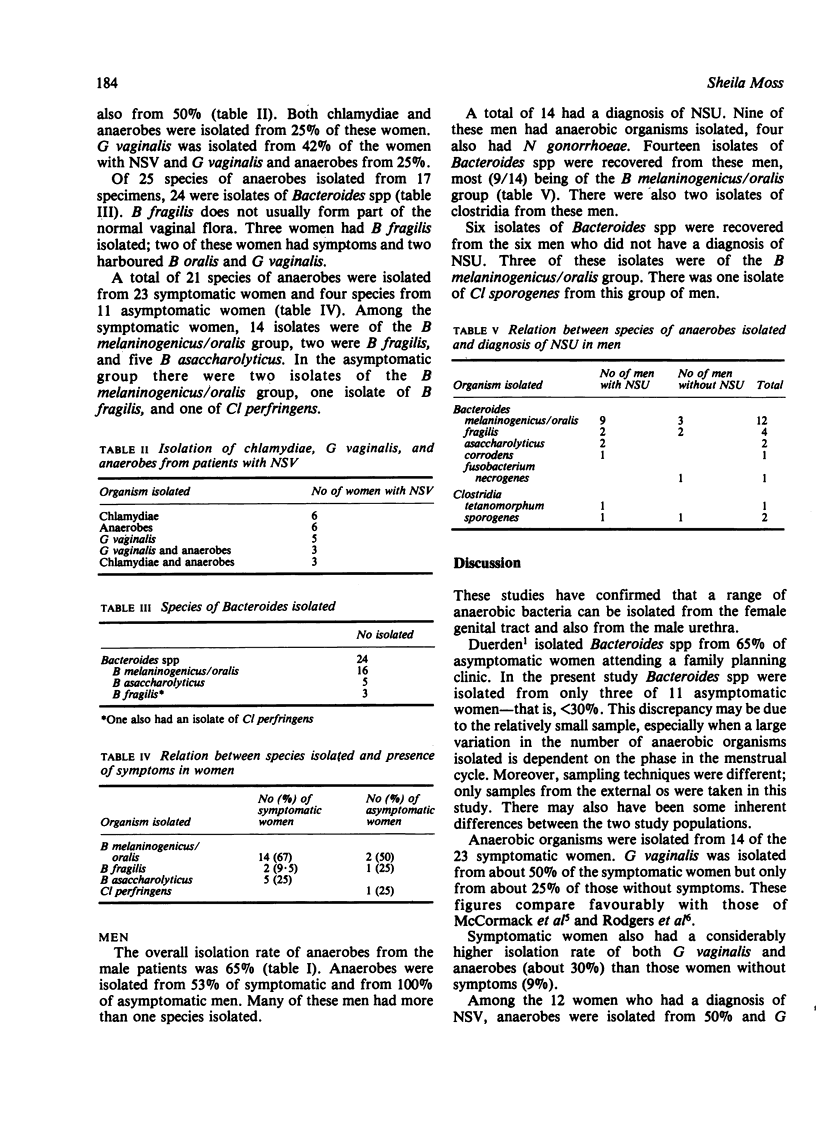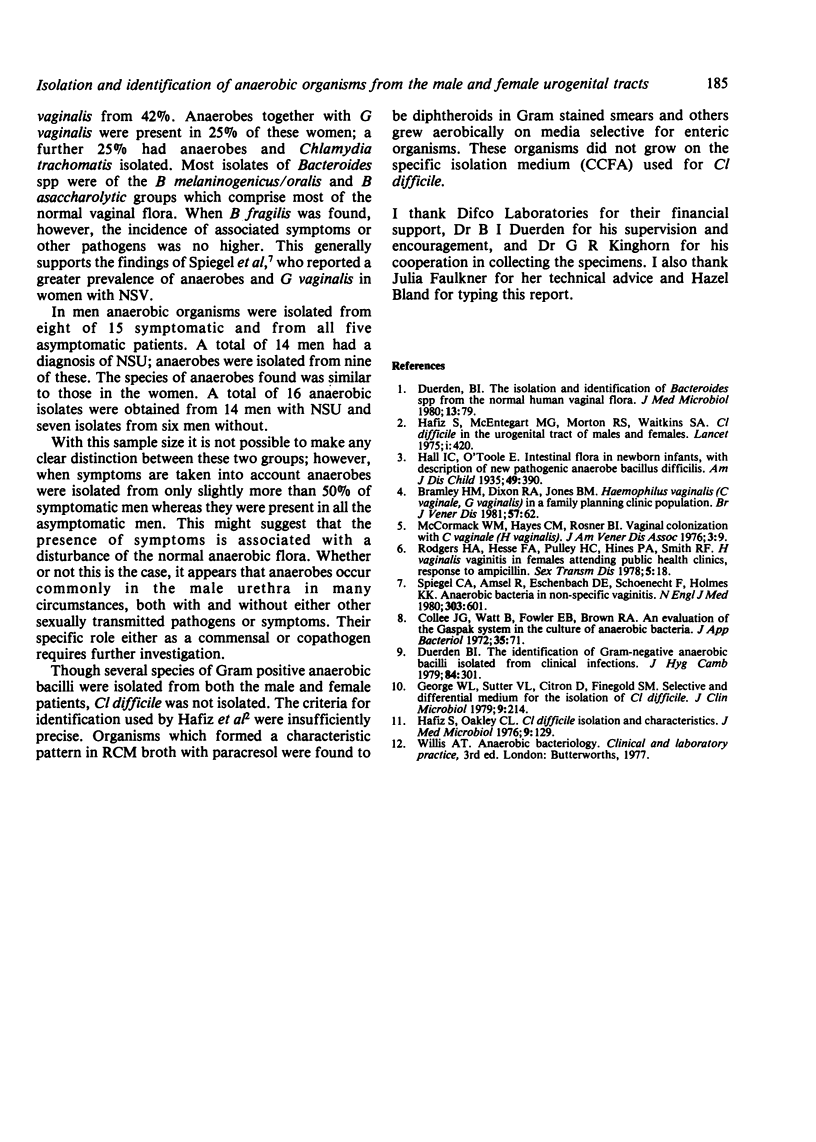Abstract
Since Bacteroides spp may play an important role together with Gardnerella vaginalis in the pathogenesis of non-specific vaginitis and balanoposthitis, anaerobic organisms were isolated and identified from 34 female and 20 male patients attending a department of genitourinary medicine, and the results compared with the clinical findings and the presence of other routinely isolated pathogens. Twenty-three different organisms were recovered from 13 of the 20 men; of these organisms, 20 were of the Bacteroides spp. Most isolates were of the B melaninogenicus/oralis group, which forms part of the commensal vaginal flora in women. A definite association between the presence of anaerobes and other pathogens needs to be firmly established, as this obviously causes important complications in treating these conditions.
Full text
PDF



Selected References
These references are in PubMed. This may not be the complete list of references from this article.
- Bramley H. M., Dixon R. A., Jones B. M. Haemophilus vaginalis (Corynebacterium vaginale, Gardnerella vaginalis) in a family planning clinic population. Br J Vener Dis. 1981 Feb;57(1):62–66. doi: 10.1136/sti.57.1.62. [DOI] [PMC free article] [PubMed] [Google Scholar]
- Collee J. G., Watt B., Fowler E. B., Brown R. An evaluation of the Gaspak system in the culture of anaerobic bacteria. J Appl Bacteriol. 1972 Mar;35(1):71–82. doi: 10.1111/j.1365-2672.1972.tb03675.x. [DOI] [PubMed] [Google Scholar]
- Duerden B. I. The identification of gram-negative anaerobic bacilli isolated from clinical infections. J Hyg (Lond) 1980 Apr;84(2):301–313. doi: 10.1017/s0022172400026802. [DOI] [PMC free article] [PubMed] [Google Scholar]
- Duerden B. I. The isolation and identification of Bacteroides ssp. from the normal human vaginal flora. J Med Microbiol. 1980 Feb;13(1):79–87. doi: 10.1099/00222615-13-1-79. [DOI] [PubMed] [Google Scholar]
- George W. L., Sutter V. L., Citron D., Finegold S. M. Selective and differential medium for isolation of Clostridium difficile. J Clin Microbiol. 1979 Feb;9(2):214–219. doi: 10.1128/jcm.9.2.214-219.1979. [DOI] [PMC free article] [PubMed] [Google Scholar]
- Hafiz S., McEntegart M. G., Morton R. S., Waitkins S. A. Clostridium defficiel in the urogenital tract of males and females. Lancet. 1975 Feb 22;1(7904):420–421. doi: 10.1016/s0140-6736(75)91489-0. [DOI] [PubMed] [Google Scholar]
- Hafiz S., Oakley C. L. Clostridium difficile: isolation and characteristics. J Med Microbiol. 1976 May;9(2):129–136. doi: 10.1099/00222615-9-2-129. [DOI] [PubMed] [Google Scholar]
- Rodgers H. A., Hesse F. E., Pulley H. C., Hines P. A., Smith R. F. Haemophilus vaginalis (Corynebacterium vaginale) vaginitis in women attending public health clinics: response to treatment with ampicillin. Sex Transm Dis. 1978 Jan-Mar;5(1):18–21. doi: 10.1097/00007435-197801000-00006. [DOI] [PubMed] [Google Scholar]
- Spiegel C. A., Amsel R., Eschenbach D., Schoenknecht F., Holmes K. K. Anaerobic bacteria in nonspecific vaginitis. N Engl J Med. 1980 Sep 11;303(11):601–607. doi: 10.1056/NEJM198009113031102. [DOI] [PubMed] [Google Scholar]


